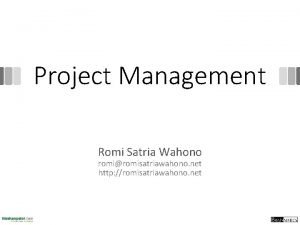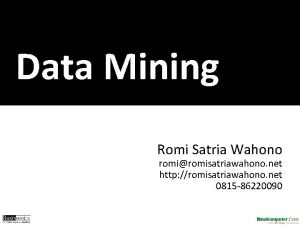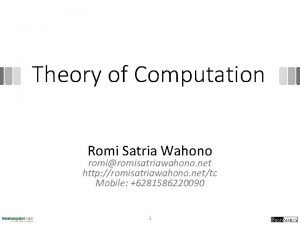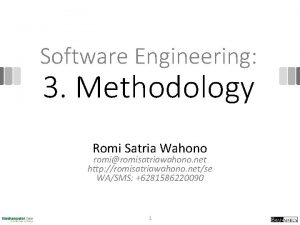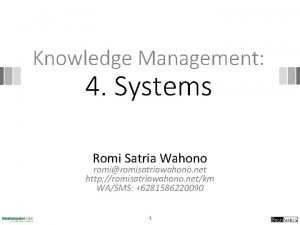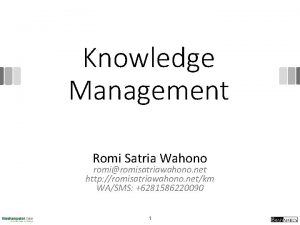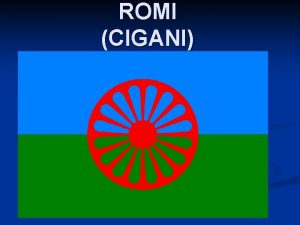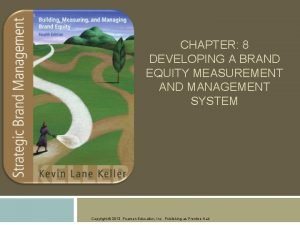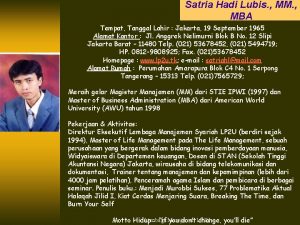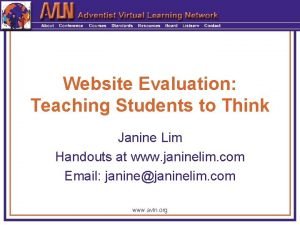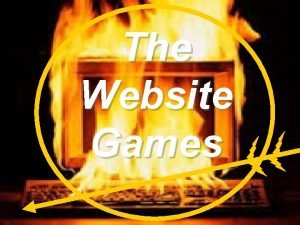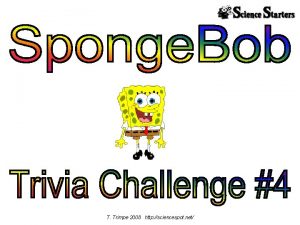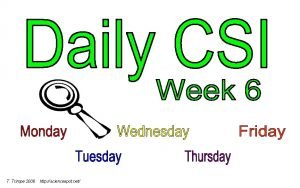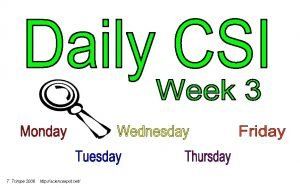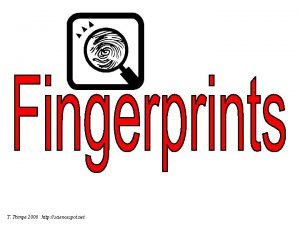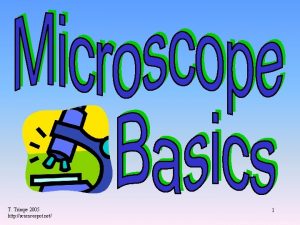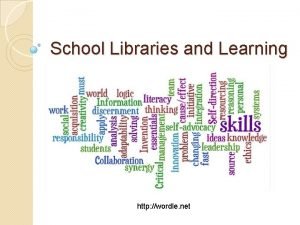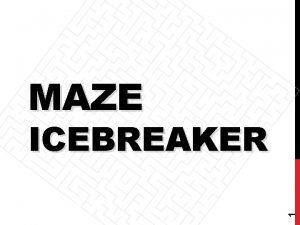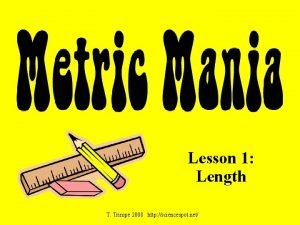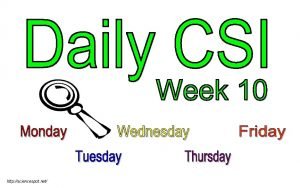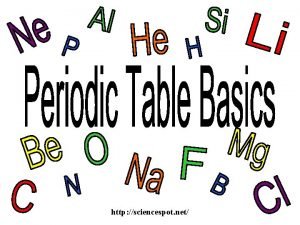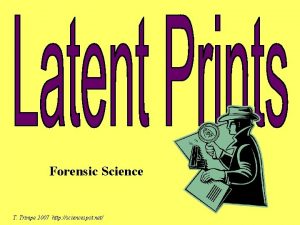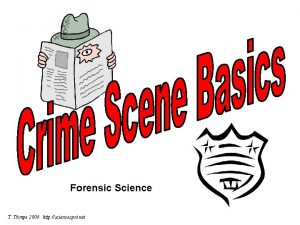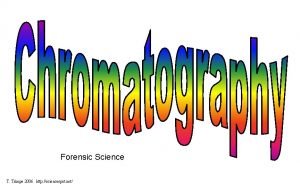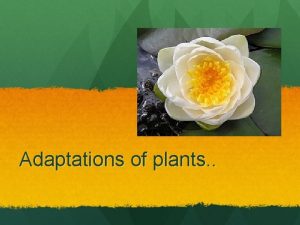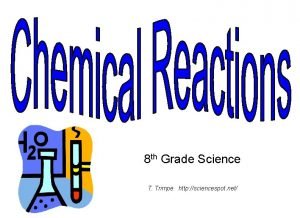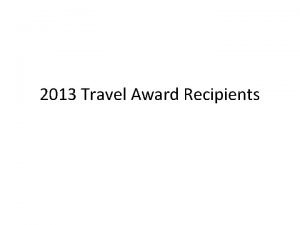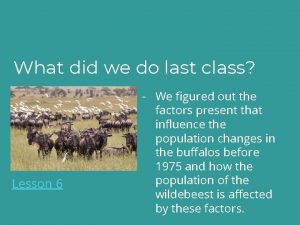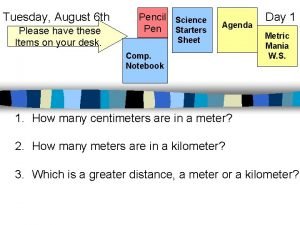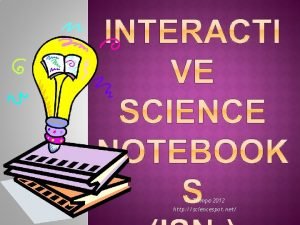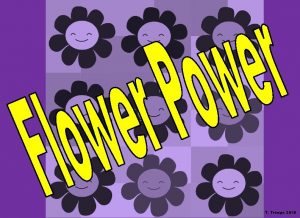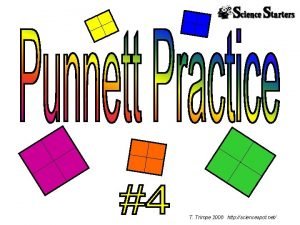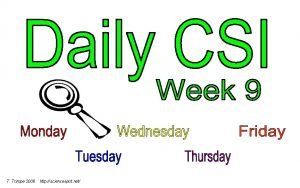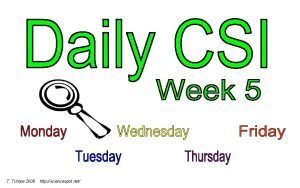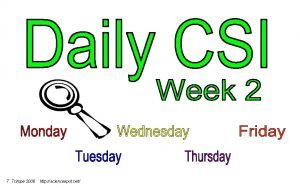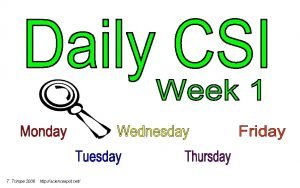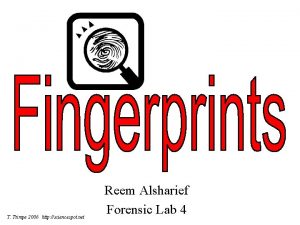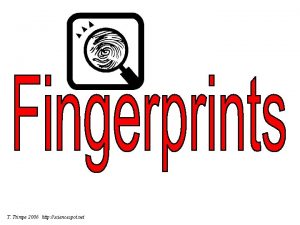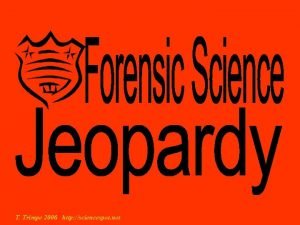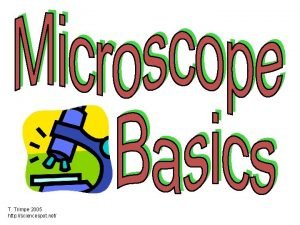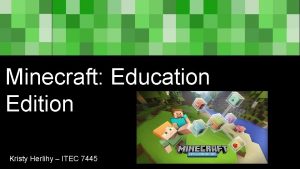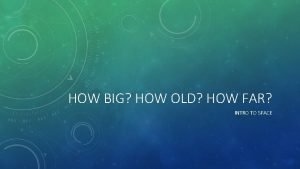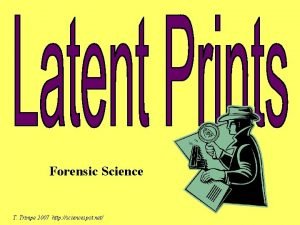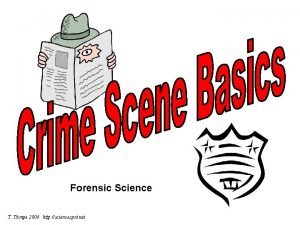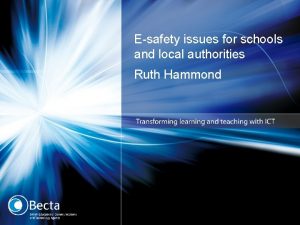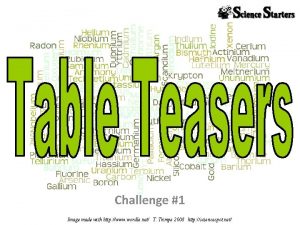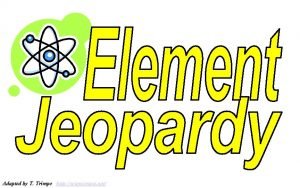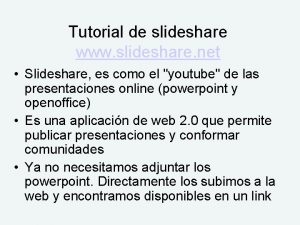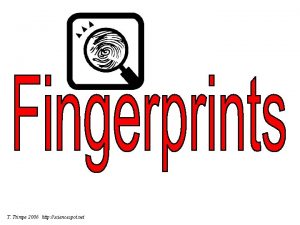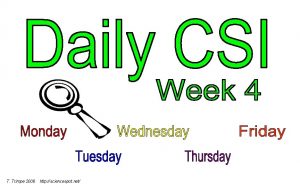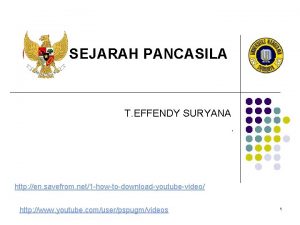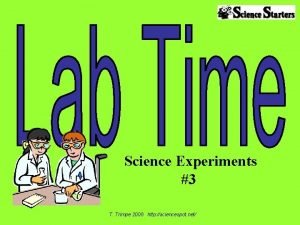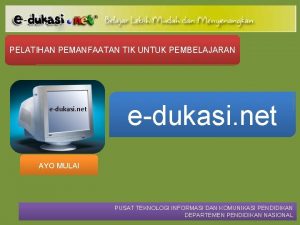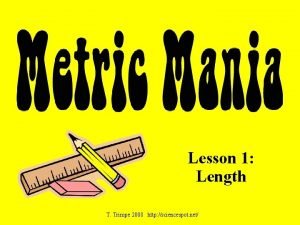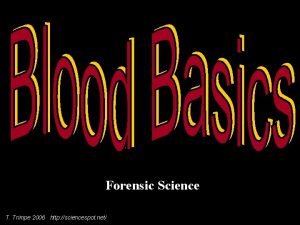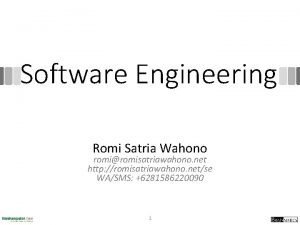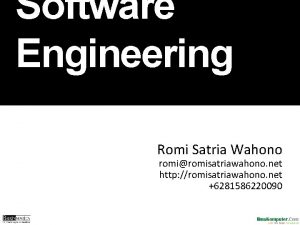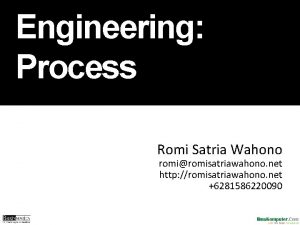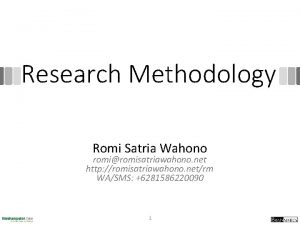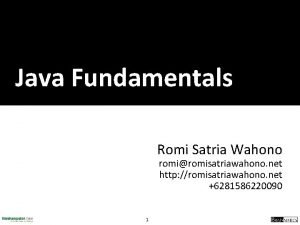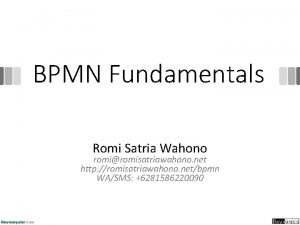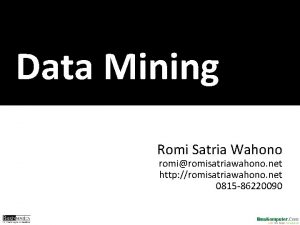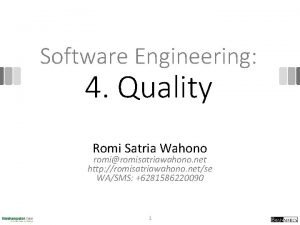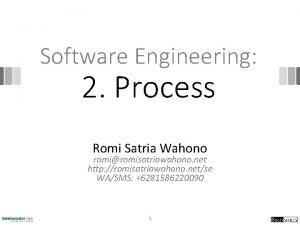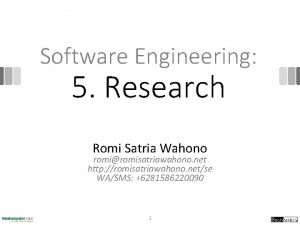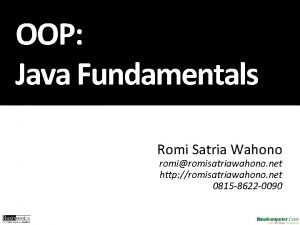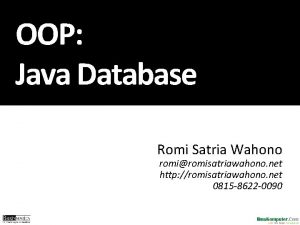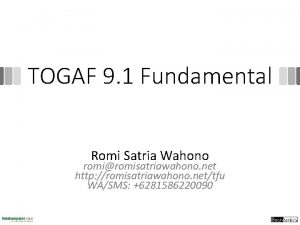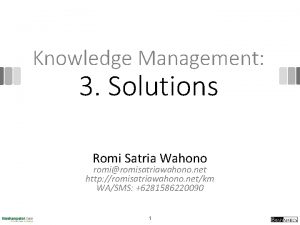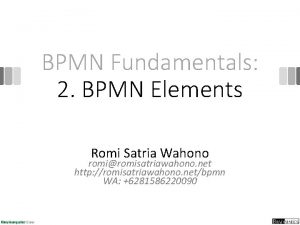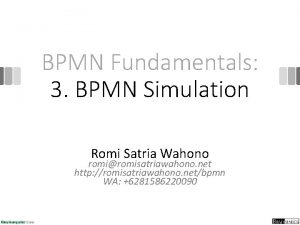Software Engineering Romi Satria Wahono romiromisatriawahono net http




































































- Slides: 68

Software Engineering Romi Satria Wahono romi@romisatriawahono. net http: //romisatriawahono. net/se WA/SMS: +6281586220090 1

Romi Satria Wahono • • SD Sompok Semarang (1987) SMPN 8 Semarang (1990) SMA Taruna Nusantara Magelang (1993) B. Eng, M. Eng and Ph. D in Software Engineering from Saitama University Japan (1994 -2004) Universiti Teknikal Malaysia Melaka (2014) Research Interests: Software Engineering and Machine Learning Founder dan Koordinator Ilmu. Komputer. Com Peneliti LIPI (2004 -2007) Founder dan CEO PT Brainmatics Cipta Informatika 2

3

Learning Design Educational Objectives (Benjamin Bloom) Criterion Referenced Instruction (Robert Mager) Cognitive Competencies Minimalism (John Carroll) Start Immediately Minimize the Reading Affective Performance Error Recognition Psychomotor Evaluation 4 Self-Contained

Textbooks 5

Course Outline 1. Introduction 2. Process 3. Methodology 4. Quality 5. Research 6

1. Introduction 1. 1 What is Software 1. 2 What is Software Engineering 1. 3 Software Myths 1. 4 Software Engineering Discipline

1. 1 What is Software 8

Software Di Sekitar Kita • Hampir semua peralatan elektronik digerakkan oleh software! • Mobil, pesawat terbang, kapal laut, … • Telepon, bangunan, kota, … • Semua disiplin ilmu menggunakan software! • Teknik dan sains (teknik sipil, teknik mesin, teknik geologi, …) • Kedokteran, farmasi, … • Hardware tidak berfungsi tanpa software di dalamnya 9

The Definition of Software • Computer programs, procedures, and possibly associated documentation and data pertaining to the operation of a computer system (IEEE, 1991) (ISO, 1997) (ISO/IEC 9000 -3) • (1) Instructions (computer programs) that when executed provide desired features, function, and performance (2) Data structures that enable the programs to adequately manipulate information, and (3) Descriptive information in both hard copy and virtual forms that describes the operation and use of the programs (Pressman, 2014) • Computer programs and associated documentation (Sommerville, 2015) 10

Jenis Software Market Lisensi Domain 11

Jenis Software (Market) • Software Generik Perangkat lunak standar yang diproduksi oleh perusahaan pengembang dan dijual pada pasar terbuka ke siapapun yang bisa membelinya (Shrinkwrapped) • Software Pesanan Perangkat lunak yang dikembangkan khusus dan disesuaikan dengan kebutuhan pelanggan (Sommerville, 2015) 12

13

14

Jenis Software (Domain) 1. 2. 3. 4. 5. 6. 7. System software Application software Engineering/scientific software Embedded software Product line software Web applications Artificial intelligence software (Pressman, 2014) 15

System Software • System software is a collection of programs written to service other programs • It is characterized by heavy interaction with computer hardware; heavy usage by multiple users; concurrent operation that requires scheduling, resource sharing, and sophisticated process management; complex data structures; and multiple external interfaces • Ex. Compilers, operating system, drivers etc. 16

Application Software • Application software consists of standalone programs that solve a specific business need • Application software is used to control the business function in real-time. 17

Engineering /Scientific software • Characterized by "number crunching" algorithms • Applications range from astronomy to volcano logy, from automotive stress analysis to space shuttle orbital dynamics, and from molecular biology to automated manufacturing • Ex. Computer Aided Design (CAD), system stimulation etc. 18

Embedded Software • It resides in read-only memory and is used to control products and systems • Embedded software can perform limited and esoteric functions • Ex. Elevator, Air Conditioner, keypad control for a microwave oven 19

Product Line Software • Designed to provide a specific capability for use by many different customers, product line software can focus on a limited and esoteric marketplace • Ex. Word processing, spreadsheet, CG, multimedia, etc. 20

Web Applications • Web apps can be little more than a set of linked hypertext files • It evolving into sophisticated computing environments that not only provide standalone features, functions but also integrated with corporate database and business applications 21

Artificial Intelligence Software • AI software makes use of non-numerical algorithms to solve complex problems that are not amenable to computation or straightforward analysis • Ex. Robotics, expert system, game playing, etc. 22

Jenis Software (Lisensi) Open Source Software Proprietary Software Linux, Open. Office, GIMP MS Windows, MS Office 2013, Adobe Photoshop Purchased with its source code Purchased without its source code Users can get for free of charge Users must pay to get Users can modify the software Users cannot modify the software Users can install software freely into any computer Users must have a license from vendor before install into computer No one is responsible to the software Fully support from vendor if anything happened to the software 23

Open Source Software • Software yang source codenya terbuka dan didistribusikan dalam suatu format lisensi yang memungkinkan pihak lain secara bebas memperbanyak dan memodifikasi source code didalamnya • Hak cipta tetap ada, tapi lisensi memungkinkan orang lain bebas untuk menggunakan dan memodifikasi software tersebut • Jenis lisensi open source software: • • • GNU General Public License (GPL) Apache License BSD license MIT License Mozilla Public License 24

Proprietary Software • Software yang source codenya tertutup dan didistribusikan dengan suatu format lisensi yang membatasi pihak lain untuk menggunakan, memperbanyak dan memodifikasi • Lisensi proprietary software memungkinkan orang lain menggunakan software yang kita buat dengan diikuti penyerahan royalti (uang) ke pemilik hak ciptanya • Shareware dan Freeware adalah proprietary software. Free for use belum tentu free for (redistribute) atau free for modify! 25

Peranan Software 1. Menggantikan peran manusia: Dengan otomasi terhadap suatu tugas atau proses 2. Memperkuat peran manusia: Dengan membantu manusia mengerjakan suatu tugas atau proses dengan lebih baik dan tertata 3. Restrukturisasi Peran Manusia: Dengan melakukan perubahan thd sekumpulan tugas atau proses 4. Hiburan dan Permainan: Dengan menyajikan aplikasi interaktif hiburan yang semakin dekat dengan kenyataan 26

Hardware vs. Software Hardware Manufactured Wear out Built using components Software Developed/Engineered Deteriorate Custom built Relatively simple Visible Defect Complex Invisible Defect 27

Manufacturing vs. Development • Once a hardware product has been manufactured, it is difficult or impossible to modify • In contrast, software products are routinely modified and upgraded. • In hardware, hiring more people allows you to accomplish more work, • but the same does not necessarily hold true in software engineering • Unlike hardware, software costs are concentrated in design rather than production 28

Failure Curve for Hardware 29

Failure Curve for Software • When a hardware component wears out, it is replaced by a spare part • There are no software spare parts. Every software failure indicates an error in design or in the process through which design was translated into machine executable code • Therefore, software maintenance involves considerably more complexity 30

Component Based vs. Custom Built • Hardware products typically employ many standardized design components • Most software continues to be custom built • The software industry does seem to be moving (slowly) toward component-based construction 31

Visibility of Product • Produk software tidak terlihat dengan kasat mata, termasuk bila ada cacat (defect) dari produk • Produk hardware terlihat dengan kasat mata, termasuk bila ada cacat (defect) dari produk 32

Warranty Lawsuits • Mortenson vs. Timeberline Software (TS) (≈1993) • Mortenson menggunakan software yang diproduksi TS untuk membuka tender pembangunan rumah sakit • Software memiliki bug sehingga memenangkan perusahaan yang mengajukan proposal paling mahal (kerugian 2 miliar USD) • TS tahu tentang bug itu, tapi tidak mengirimkan update ke Mortenson • Pengadilan di Amerika Serikat memenangkan perusahaan TS • Uniform Computer Information Transaction Act (UCITA) allows software manufacturers to: • disclaim all liability for defects • prevent the transfer of software from person to person 33

Disclaimer of Warranties DISCLAIMER OF WARRANTIES. TO THE MAXIMUM EXTENT PERMITTED BY APPLICABLE LAW, MICROSOFT AND ITS SUPPLIERS PROVIDE TO YOU THE SOFTWARE COMPONENT, AND ANY (IF ANY) SUPPORT SERVICES RELATED TO THE SOFTWARE COMPONENT ("SUPPORT SERVICES") AS IS AND WITH ALL FAULTS; AND MICROSOFT AND ITS SUPPLIERS HEREBY DISCLAIM WITH RESPECT TO THE SOFTWARE COMPONENT AND SUPPORT SERVICES ALL WARRANTIES AND CONDITIONS, WHETHER EXPRESS, IMPLIED OR STATUTORY, INCLUDING, BUT NOT LIMITED TO, ANY (IF ANY) WARRANTIES OR CONDITIONS OF OR RELATED TO: TITLE, NONINFRINGEMENT, MERCHANTABILITY, FITNESS FOR A PARTICULAR PURPOSE, LACK OF VIRUSES, ACCURACY OR COMPLETENESS OF RESPONSES, RESULTS, LACK OF NEGLIGENCE OR LACK OF WORKMANLIKE EFFORT, QUIET ENJOYMENT, QUIET POSSESSION, AND CORRESPONDENCE TO DESCRIPTION. THE ENTIRE RISK ARISING OUT OF USE OR PERFORMANCE OF THE SOFTWARE COMPONENT AND ANY SUPPORT SERVICES REMAINS WITH YOU. 34

1. 2 What is Software Engineering? 35

The Term “Software Engineering” • Margaret Hamilton (NASA engineer), coined the term “software engineering” in 1960’s • Standing with the “code” (on punch cards) she developed for the Apollo 11

Mengapa Software Engineering? • Terminologi software engineering secara resmi pertama kali digunakan pada conference tentang software crisis tahun 1968 • Krisis perangkat lunak merupakan akibat langsung dari lahirnya komputer generasi ke 3 yang canggih pada waktu itu • Perangkat lunak yang dihasilkan menjadi beberapa kali lebih besar dan kompleks • Pendekatan informal tidak cukup efektif (cost, waktu dan kualitas) dalam pengembangan perangkat lunak • Biaya hardware jatuh dan biaya perangkat lunak naik cepat 37

Generasi Komputer 1. Generasi I (1946 -1959) • Menggunakan tabung hampa • ENIAC, EDSAC 2. Generasi II (1959 -1964) • Menggunakan transistor • PDP-1, PDP-8, UNIVAC, IBM 70 xx 3. Generasi III (1964 -1979) • Menggunakan IC • IBM S 360, NOVA, UNIVAC 1108 4. Generasi IV (1980 -sekarang) • Menggunakan VLSI 38

What is Software Engineering? Disiplin ilmu yang membahas semua aspek produksi perangkat lunak, mulai dari tahap awal spesifikasi, desain, konstruksi, testing sampai pemeliharaan setelah digunakan (Sommerville, 2009) 39

What is Software Engineering? • Definition (IEEE, 1993): • (1) The application of systematic, disciplined, quantifiable approach to the development, operation, and maintenance of software; that is, the application of engineering to software. (2) The study of approaches as in (1) above • Its a discipline that is concerned with all aspects of software production • Software engineers should adopt: • Systematic and organized approach to their work • Use appropriate tools and techniques depending on the problem to be solved • The development constraints and the resources available 40

What is Software Engineering? 41

What is Software Engineering? • Software engineering is NOT (just) programming • But, of course, to be a good software engineer, one should be good at programming • Software engineering is the study and application of engineering to the design, development, testing, and maintenance of software systems • Software engineering deal with issues such as: • How can we develop a software in shortest time, lowest cost and with highest quality? • How can we test a software in shortest time, lowest cost and with highest quality? • When we have a large team of programmers, how can we assign the best people to development and testing tasks? • How can we ensure we have inquired the software requirements from the client in the most efficient and effective way? 42

Software Engineering Problem Building software will always be hard. There is inherently no silver bullet (Brooks, 1987)


The Challenges in Software Engineering Good software: • Should deliver the functionality and performance that the software users need • Should be maintainable, dependable and usable (Sommerville, 2012) 45

Software Quality Metrics Product Mc. Call (mengukur software dari kualitas produk jadinya) ISO 9126 Software Quality CMMI Process (mengukur software dari kematangan proses pengembangannya) SPICE ISO 9001

Latihan Kognitif • Jelaskan latar belakang munculnya disiplin software engineering! • Jelaskan definisi dari software engineering! • Apa yang disebut dengan software yang berkualitas? • Jelaskan bagaimana cara mengukur kualitas software! 47

1. 3 Software Myths 48

Software Myths • Definition: • Beliefs about software and the process used to build it. Myths have number of attributes that have made them insidious (i. e. dangerous). • Misleading Attitudes - caused serious problem for managers and technical people • Software Myths: • Management myths: Managers in most disciplines, are often under pressure to maintain budgets, keep schedules on time, and improve quality • Customer Myths: Customer may be a person from inside or outside the company that has requested software under contract • Practitioner's myths 49

Management Myths • Myth 1: • We already have a book that's full of standards and procedures for building software, won't that provide my people with everything they need to know? • Reality: • Are software practitioners aware of existence standards? • Does it reflect modern software engineering practice? • Is it complete? Is it streamlined to improve time to delivery while still maintaining a focus on quality? 50

Management Myths • Myth 2: • If we get behind schedule, we can add more programmers and catch up • Reality: • Software development is not a mechanistic process like manufacturing. Adding people to a late software project makes it later (Brook, 1975) • People can be added but only in a planned and wellcoordinated manner • Myth 3: • If I decide to outsource the software project to a third party, I can just relax and let that firm build it • Reality: • If an organization does not understand how to manage and control software projects internally, it will invariably struggle when it outsource software projects 51

Customer Myths • Myth 1: • A general statement of objectives is sufficient to begin writing programs— we can fill in the details later • Reality: • A poor up-front definition is the major cause of failed software efforts. A formal and detailed description of the information domain, function, behavior, performance, interfaces, design constraints, and validation criteria is essential. These characteristics can be determined only after thorough communication between customer and developer. • Myth 2: • Project requirements continually change, but change can be easily accommodated because software is flexible • Reality: • Customer can review requirements and recommend modifications with relatively little impact on cost. When changes are requested during software design, the cost impact grows rapidly. Below mentioned figure for reference. 52


Practitioner's myths • Myth 1: • Once we write the program and get it to work, our job is done • Reality: • Someone once said that "the sooner you begin 'writing code', the longer it'll take you to get done. " Industry data indicate that between 60 and 80 percent of all effort expended on software will be expended after it is delivered to the customer for the first time • Myth 2: • Until I get the program "running" I have no way of assessing its quality • Reality: • One of the most effective software quality assurance mechanisms can be applied from the inception of a project— the formal technical review 54

Practitioner's myths • Myth 3: • The only deliverable work product for a successful project is the working program • Reality: • A working program is only one part of a software configuration that includes many elements. Documentation provides a foundation for successful engineering and, more important, guidance for software support • Myth 4: • Software engineering will make us create voluminous and unnecessary documentation and will invariably slow us down • Reality: • Software engineering is not about creating documents. It is about creating quality. Better quality leads to reduced rework. And reduced rework results in faster delivery times 55

Latihan Kognitif • Jelaskan dengan bahasa sendiri apa yang dimaksud dengan software! • Jelaskan jenis-jenis software! • Jelaskan karakteristik dari software yang membuat berbeda dengan produk hardware! 56

Latihan Analisis Kasus • PT ABC meminta jasa anda untuk membangun sebuah situs portal untuk perusahaan PT ABC tersebut • Anda menggunakan CMS opensource bernama Wordpress untuk engine dari situs portal yang dibuat • Kemudian anda mengembangkan beberapa plugin yang sesuai dengan business process yang diinginkan oleh perusahaan tersebut. Sehingga akhirnya berhasil dibangun sebuah situs portal perusahaan yang lengkap dan sesuai dengan keinginan perusahan tersebut • Anda mengirimkan invoice tagihan untuk perusahaan PT ABC sebesar Rp. 100 juta untuk biaya pembangunan situs portal tersebut • Apakah yang saya lakukan ini sah dan diperbolehkan? 57

1. 4 Software Engineering Discipline

Disiplin Ilmu Software Engineering 1. Peter J Dennings yang memimpin task force disiplin ilmu computing memasukkan software engineering sebagai satu disiplin ilmu (Dennings, 1999) 2. IEEE Computer Society membentuk tim khusus untuk menyusun pohon ilmu Software Engineering (Software Engineering Body of Knowledge, SWEBOK) http: //swebok. org 3. Software Engineering termasuk nama jurusan atau fakultas yang diakui menurut IEEE Computing Curricula 2005 59

Matriks Dennings 1999 1. Algoritma dan Struktur Data 2. Bahasa Pemrograman 3. Arsitektur Komputer 4. Sistem Operasi dan Jaringan 5. Software Engineering 6. Database dan Sistim Retrieval Informasi 7. Artificial Intelligence dan Robotik 8. Grafik 9. Human Computer Interaction 10. Ilmu Komputasi 11. Organizational Informatics 12. Bio. Informatik ( Peter J. Dennings, 1999 )

Software Engineering Body of Knowledge (SWEBOK) 1. 2. 3. 4. 5. 6. 7. 8. 9. 10. 11. 12. 13. 14. 15. Software Requirements Software Design Software Construction Software Testing Software Maintenance Software Configuration Management Software Engineering Process Software Engineering Models and Methods Software Quality Software Engineering Professional Practice Software Engineering Economics Computing Foundations Mathematical Foundations Engineering Foundations 61

IEEE/ACM Computing Curricula 2005 Computer Engineering (CE) Information System (IS) pengembangan sistem terintegrasi(software dan hardware) analisa kebutuhan dan proses bisnis serta desain sistem Computer Engineer System Analyst Information Technology (IT) pengembangan dan maintenance infrastruktur IT IT Engineer Computer Science (CS) konsep computing dan pengembangan software Computer Scientist Software Engineering (SE) pengembangan software dan pengelolaan tahapan SDLC Software Engineer

Why Become a Software Engineer? 5 Best Jobs in the World: 1. Software Engineer: • $80, 500 Average Pay and 46% 10 Year Growth 2. College Professor: • $81, 500 Average Pay and 31% 10 Year Growth 3. Financial Adviser: • $122, 500 Average Pay and 26% 10 Year Growth 4. Human Resources Manager: • $73, 500 Average Pay and 23% 10 Year Growth 5. Physician Assistant: • $75, 000 Average Pay and 50% 10 Year Growth 63

The World's Billionaires 64

Reference (Foundation) • Ian Sommerville, Software Engineering 10 th Edition, Addison -Wesley, 2015 • Roger S. Pressman, Software Engineering: A Practitioner’s Approach 8 th Edition, Mc. Graw-Hill, 2014 • P. Bourque and R. E. Fairley, eds. , Guide to the Software Engineering Body of Knowledge Version 3. 0, IEEE Computer Society, 2014 • Albert Endres dan Dieter Rombach, A Handbook of Software and Systems Engineering, Pearson Education Limited, 2003 • Yingxu Wang, Software Engineering Foundations: A Software Science Perspective, Auerbach Publications, Taylor & Francis Group, 2008

Reference (Process) • Alan Dennis et al, Systems Analysis and Design with UML – 4 th Edition, John Wiley and Sons, 2012 • Dan Pilone and Russ Miles, Head First Software Development, O’Reilly Media, 2008 • Barclay and Savage, Object-Oriented Design with UML and Java, Elsevier, 2004 • Kenneth E. Kendall and Julie E Kendall, Systems Analysis and Design 8 th Edition, Prentice Hall, 2010 • Hassan Gomaa, Software Modeling and Design: UML, Use Cases, Patterns, and Software Architectures, Cambridge University Press, 2011 • Layna Fischer (edt. ), BPMN 2. 0 Handbook Second Edition, Future Strategies, 2012

Reference (Quality) • Daniel Galin, Software Quality Assurance, Addison. Wesley, 2004 • Kshirasagar Naik and Priyadarshi Tripathy, Software Testing and Quality Assurance, John Wiley & Sons, Inc. , 2008 • Jeff Tian, Software Quality Engineering, John Wiley & Sons, Inc. , 2005 • G. Gordon Schulmeyer, Handbook of Software Quality Assurance Fourth Edition, Artech House, 2008

Reference (Research) • Christian W. Dawson, Project in Computing and Information System a Student Guide 2 nd Edition, Addison-Wesley, 2009 • Mikael Berndtsson, Jörgen Hansson, Björn Olsson, Björn Lundell, Thesis Projects - A Guide for Students in Computer Science and Information System 2 nd Edition, Springer-Verlag London Limited, 2008 • Mary Shaw, Writing Good Software Engineering Research Papers, Proceedings of the 25 th International Conference on Software Engineering, 2003 • C. Wohlin, P. Runeson, M. Host, M. C. Ohlsson, B. Regnell, and A. Wesslen, Experimentation in Software Engineering, Springer, 2012 • P. Runeson, M. Host, A. Rainer, and B. Regnell, Case Study Research in Software Engineering: Guiidelines and Examples, John Wiley & Sons, Inc. , 2012 68
 Romi satria wahono
Romi satria wahono Data mining romi satria wahono
Data mining romi satria wahono Kerangka pemikiran skripsi
Kerangka pemikiran skripsi Romi satria wahono
Romi satria wahono Romi satria wahono
Romi satria wahono Romi satrio wahono
Romi satrio wahono Romi satria wahono
Romi satria wahono Romi cigani
Romi cigani Developing a brand equity measurement and management system
Developing a brand equity measurement and management system Satria hadi lubis
Satria hadi lubis System architecture example
System architecture example Forward engineering in software engineering
Forward engineering in software engineering Software maintenance in software engineering ppt
Software maintenance in software engineering ppt What is software implementation in software engineering
What is software implementation in software engineering Metrics computer science
Metrics computer science Example of software crisis
Example of software crisis Software measurement and metrics
Software measurement and metrics Real time software design in software engineering
Real time software design in software engineering Design principles in software engineering
Design principles in software engineering Http //mbs.meb.gov.tr/ http //www.alantercihleri.com
Http //mbs.meb.gov.tr/ http //www.alantercihleri.com Http //siat.ung.ac.id atau http //pmb.ung.ac.id
Http //siat.ung.ac.id atau http //pmb.ung.ac.id Noodle tools.com
Noodle tools.com Http://zapatopi.net/treeoctopus
Http://zapatopi.net/treeoctopus Http://sciencespot.net
Http://sciencespot.net T.trimpe 2003 http //sciencespot.net/ answers
T.trimpe 2003 http //sciencespot.net/ answers T. trimpe 2006 http //sciencespot.net/
T. trimpe 2006 http //sciencespot.net/ Sciencespot.net fingerprint challenge
Sciencespot.net fingerprint challenge T. trimpe 2004 http //sciencespot.net/
T. trimpe 2004 http //sciencespot.net/ Http://wordle.net
Http://wordle.net Http://www.mazegenerator.net/
Http://www.mazegenerator.net/ Publishing companies in louisiana
Publishing companies in louisiana T. trimpe 2008 http //sciencespot.net/
T. trimpe 2008 http //sciencespot.net/ Sciencespot
Sciencespot Sciencespot
Sciencespot Slideshare
Slideshare T. trimpe 2007 http //sciencespot.net/
T. trimpe 2007 http //sciencespot.net/ Http /sciencespot.net/
Http /sciencespot.net/ T. trimpe 2006 http //sciencespot.net/ answer key
T. trimpe 2006 http //sciencespot.net/ answer key Www.mbgnet/bioplants/adapt.html
Www.mbgnet/bioplants/adapt.html T. trimpe 2006 http://sciencespot.net/
T. trimpe 2006 http://sciencespot.net/ Http://l.sasbu.chevron.net/web/default.aspx
Http://l.sasbu.chevron.net/web/default.aspx Serengeti.inquiry
Serengeti.inquiry Metric mania lesson 1 length
Metric mania lesson 1 length Http//sciencespot.net
Http//sciencespot.net Protective leaf-like enclosure for the flower bud
Protective leaf-like enclosure for the flower bud T. trimpe 2003 http //sciencespot.net/
T. trimpe 2003 http //sciencespot.net/ Http://sciencespot.net/
Http://sciencespot.net/ Http sciencespot.net
Http sciencespot.net T. trimpe 2002 http //sciencespot.net/
T. trimpe 2002 http //sciencespot.net/ T. trimpe 2001 http://sciencespot.net/
T. trimpe 2001 http://sciencespot.net/ T. trimpe 2006 http //sciencespot.net/
T. trimpe 2006 http //sciencespot.net/ T. trimpe 2006 http://sciencespot.net/
T. trimpe 2006 http://sciencespot.net/ T. trimpe 2006 http //sciencespot.net/
T. trimpe 2006 http //sciencespot.net/ Microscopes brainpop quiz answers
Microscopes brainpop quiz answers Http://education.minecraft.net
Http://education.minecraft.net Http://htwins.net/scale/
Http://htwins.net/scale/ T. trimpe 2007 http //sciencespot.net/
T. trimpe 2007 http //sciencespot.net/ Sciencespot.net
Sciencespot.net Http://zapatopi.net/treeoctopus/
Http://zapatopi.net/treeoctopus/ Http://www.wordle.net/
Http://www.wordle.net/ T. trimpe 2007 http://sciencespot.net/
T. trimpe 2007 http://sciencespot.net/ Http //www.slideshare.net/ 2
Http //www.slideshare.net/ 2 T. trimpe 2006 http://sciencespot.net/
T. trimpe 2006 http://sciencespot.net/ T. trimpe 2006 http://sciencespot.net/
T. trimpe 2006 http://sciencespot.net/ Http savefrom
Http savefrom T. trimpe 2008 http //sciencespot.net/
T. trimpe 2008 http //sciencespot.net/ Arti dari http //www.e-dukasi.net
Arti dari http //www.e-dukasi.net T. trimpe 2008 http://sciencespot.net/
T. trimpe 2008 http://sciencespot.net/ T. trimpe 2006 http://sciencespot.net/
T. trimpe 2006 http://sciencespot.net/
